I worked for several years in Southern Washington, visited family and friends in the state on many occasions, hiked throughout the state - but primarily in the south - and even took in a pro-baseball game in Seattle.
The North America portal page on this site includes volumes 3, 4, 7, 8, 9, & 10 of Birding the Western U.S. and Canada - those volumes include material from Washington. There is also a video portfolio of bird species, which includes material from Washington, The Birds of the United States and Canada.
Photo galleries for Washington include; Washington Birds, Washington Fauna, Washington Flora, and Washington Photos (a general gallery of photographs taken around the state).
TACOMA
August 18, 2017 - Tacoma, Museum of Glass
The Museum of Glass is one of those exotic museums, one which you want to visit time and time again. A big part of the draw for this museum is the auditorium and the routine demonstrations performed by artists working with glass. The following video was recorded in August, 2017.
August 18, 2017 - Tahlequah Ferry Dock, Vashon Island
After our visit to the Museum of Glass we were off to Vashon Island to visit a friend and to eat lunch. On the way back to Olympia where we were staying we had a wait at the Tahlequah Ferry Dock as the ferry returned from the mainland. That gave me a chance to take photographs of Phacellophora camtschatica, Fried Egg Jellyfish, and Moon Jellyfish, Aurelia labiata. Both shown below. These photos, and other images of these jellyfish have been added to the Washington Photos gallery. There is also a photograph of a Moon Jelly taken at the Oregon Coast Aquarium (so not a wild creature) in Newport, Oregon.
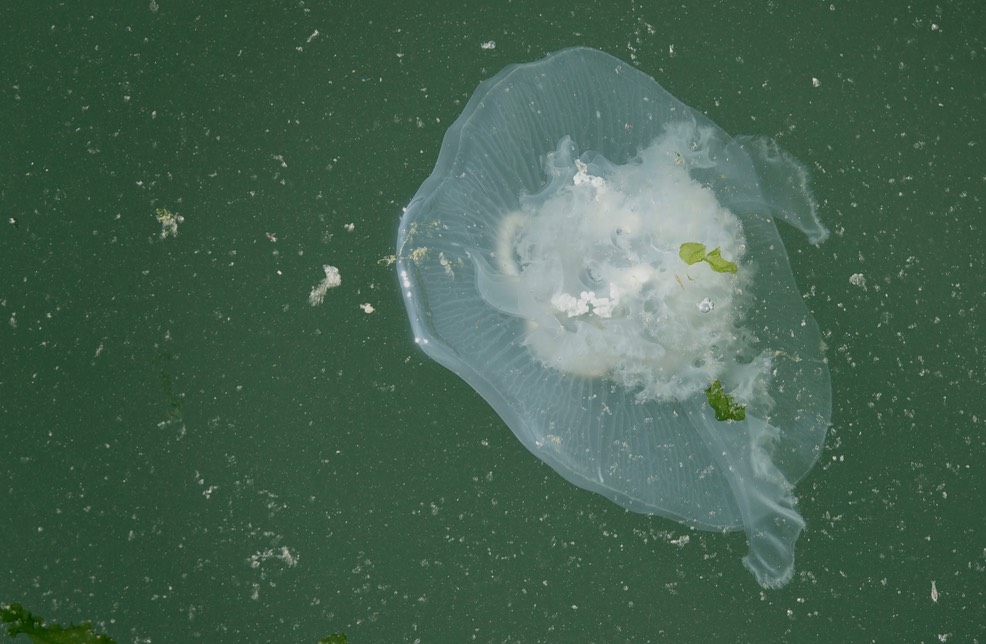
Part of the ferry ride from Pt. Defiance to Tahlequah is shown in the video below.
On August 19 we attended “In the Spirit: Northwest Native Festival” at the Washington State History Museum and Tacoma Art Museum. Photographs from those museums have been added to the Washington Photos gallery. One of the performers at the festival was Rona Yellow Robe, she was the Native American Music Award Winner for 2014 and 2016. She plays several of her trademark flutes in the video segment below.
Also at the Festival were the Alaska Kuteeyya Dancers, who are Haida and Tlingit. A video of their presentation is shown below.
OLYMPIA
August 24, 2017 - River Otters and the Olympia Waterfront
While walking around the Heritage Park basin I came across a family group of River Otters. That video has been added to the Mammals video portfolio. Photographs of the otters have been added to the Washington Photos gallery.
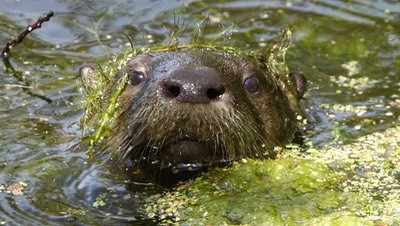
Olympia is on the waterfront so we spent our last day in Washington (for this trip) along the harbor, taking photos of wall murals, street sculptures, the capitol building and the harbor. Photographs have been added to the Washington Photos gallery.
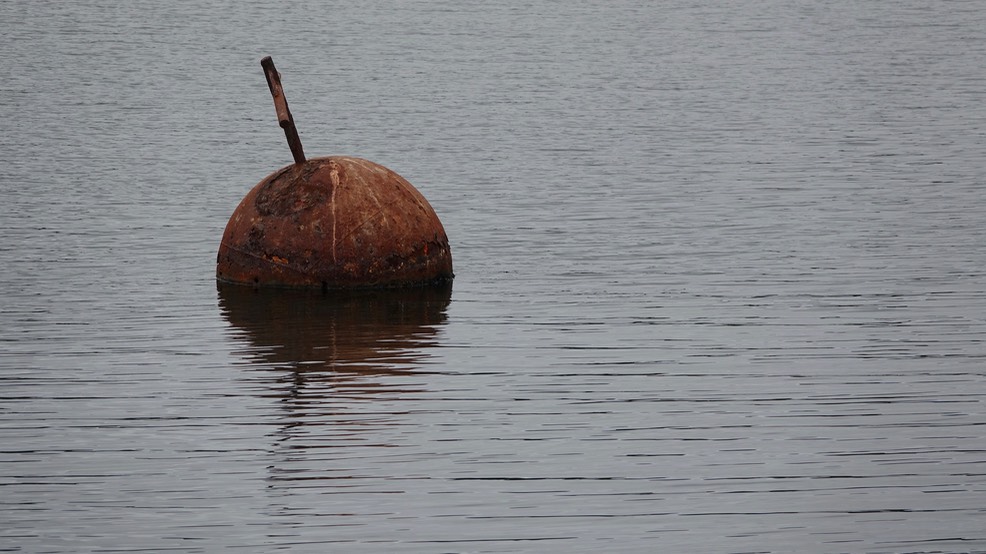
SEATTLE
The Museum of Flight at Boeing Field, Seattle, Washington is one of the premier air and space museums in the world. It provides an excellent historical context for many of its exhibits. For instance, From the placard for the 1928 Swallow Commercial:
How do you start an airline in 1926? Chief pilot, Leon Cuddleback, assembled the first plane and, took it for a flight over Elko “to make sure it would get over the mountains in the area”, he later explained. Meanwhile, since there were no maps of the route, Varney toured the landscape by motorcar, sketching a map on a postcard...
A few feet away from the Swallow is Space Ship One. How do you make a rocket line in 2007? New engines, new concepts, new materials, a new way --
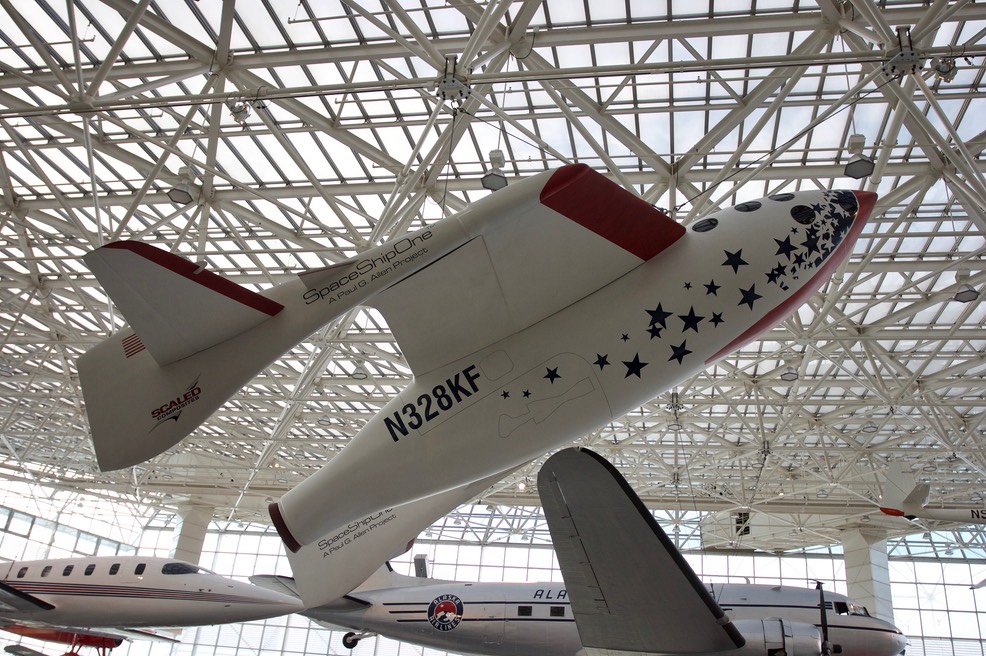
In between the Swallow and Space Ship One the MacCready Gossamer Albatross II hangs (photos below). How do humans fly? You wrap them in plastic and put them on a bicycle. That is how humans fly. Let those that can’t dream watch sitcoms.
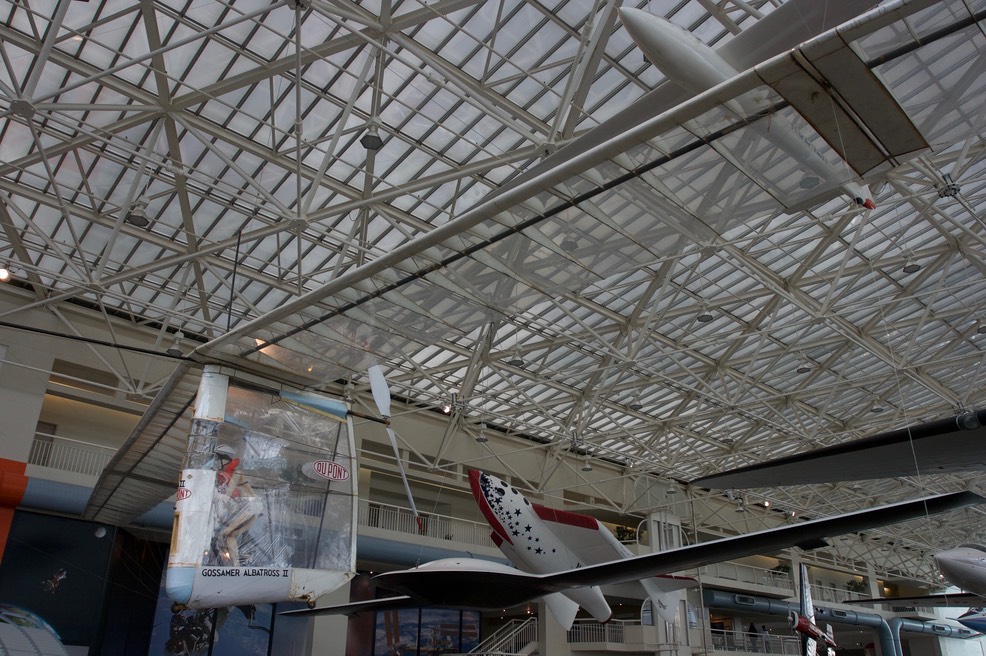
MT. ADAMS
Mt. Adams in the southern Cascades of Washington rises 8,116 feet above the countryside to reach an elevation of 12,281 feet. The slopes of Mt. Adams were a favorite camping and hiking locations when I lived in the Pacific Northwest. The names of the meadows, waterfalls, glaciers, and open slopes above timberline still resonate in my mind. A joyful and beautiful place. These are some of the posts I have made about the Mt. Adams area in the past.
From a post entitled: Timberline on Mt. Adams
I have begun to venture out once again, after being somewhat restricted for the summer. When I “venture out” it is often into the Cascade Mountains of southern Washington and northern Oregon. This part of the Cascades is dominated by volcanoes like Mt. Hood, Mt. St. Helens, and Mt. Adams.
A favorite place of mine is Bird Creek Meadows on Mt. Adams. The trailhead is a little less than three hours from Portland, on the Yakama Indian Reservation (formerly “Yakima”). The road in has gotten better over the years and although it still has its share of rocks, holes, and dust, is navigable by just about anyone.
From the trailhead, I often take the “Climbers Trail” up to about timberline. This is an area of immense beauty, an area of vivid wildflowers, of long vistas, of sharp landscapes, and relatively few people.
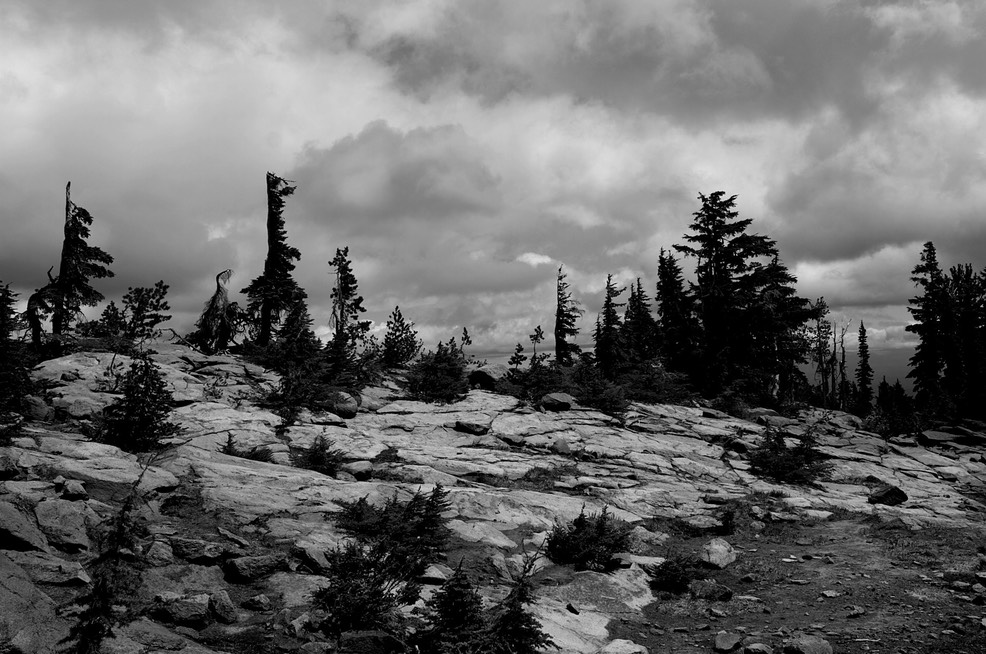
The photo above was taken at about 6,000 feet on the southeastern flank of the mountain. This zone is a wonderland of rock, dry snags, small trees, and various wildflowers. At this elevation there are generally several finches and Clark’s Nutcrackers, sometimes Gray Jays venture up this high.
Last year I carried a lot of video equipment up the side of the mountain to tape Rufous Hummingbirds, which had been all over a meadow the week before. All I came away with was a lot of sweat. Like most of the country I hike in, the most important statistic is not the length of the trail but rather the elevation gain. Everything is up and down, level is rare.
From a post entitled: Feeding Gray Jays & August in Washington
Last Friday afternoon, Rebecca and I headed off to Mt. Adams (Washington, USA) for a Saturday hike. We arrived at the small campground at Mirror Lake in time to snag one of the two remaining campsites and settled in to watch the light turn to dark. We sat by the campfire drinking some mediocre Chardonnay, watched a deer come strolling by, watched the mayfly hatch over the lake, and felt terribly contented. Your best friend, some wine, and a campfire are a good combination.
I had missed my astronomy lesson and failed to remember that Friday night was a very good night for shooting stars and miles away from any city lights would have been perfect viewing. I consoled myself with the fact that the moon had been very bright and it probably wasn’t that good of a show. (Despite what some other campers said.)
Saturday morning I brewed some Mate de Coca and was standing by the table eating crackers and drinking tea when the first Canada (Gray) Jays appeared (photo below). I knew the routine, I started to break crackers apart and threw them on the ground. The Jays would swoop in, gather as many pieces as they could in their bills and fly off -- the greedy ones would occasionally drop a bill full as they tried for one more piece.
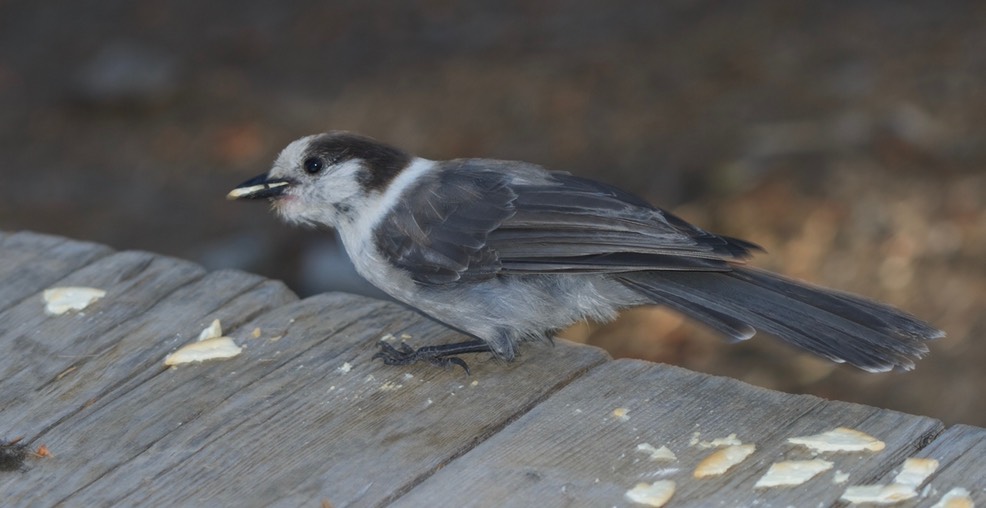
It wasn’t long before the Jays were hopping up on the table (they saw where the crackers were coming from and were apparently not pleased with my breaking of crackers schedule) so I established a feeding station at the end and snapped a few photos. When I ventured to the far end of the table for a close-up (Gray Jays are not shy, you can often get them to eat out of your hand) I heard a rustling behind me and found one sneaking to the cracker package behind my back.
After a bit, the feeding station shut down, we packed our daypacks and set off for the day.
***
After feeding the Gray Jays last Saturday we were off to the trail. Hiking up through the tall trees from the parking area for Bird Creek Meadows, we gradually emerged into the transition zone with more bare rock and smaller trees. Here we saw our first Grouse and an assortment of Chipmunks.
At about 6,500 feet we began to encounter the first snow fields, the wildflowers progressing backward to earlier in the year as we hiked higher. In the high meadows we began to find Mt. Goat fur and shortly thereafter saw our first Mt. Goats on a far ridge. This was the first time I had seen Mt. Goats in the lower 48 states of the US. At one time we were able to count 12 individuals, including at least 3 lambs. We also saw more Grouse here.
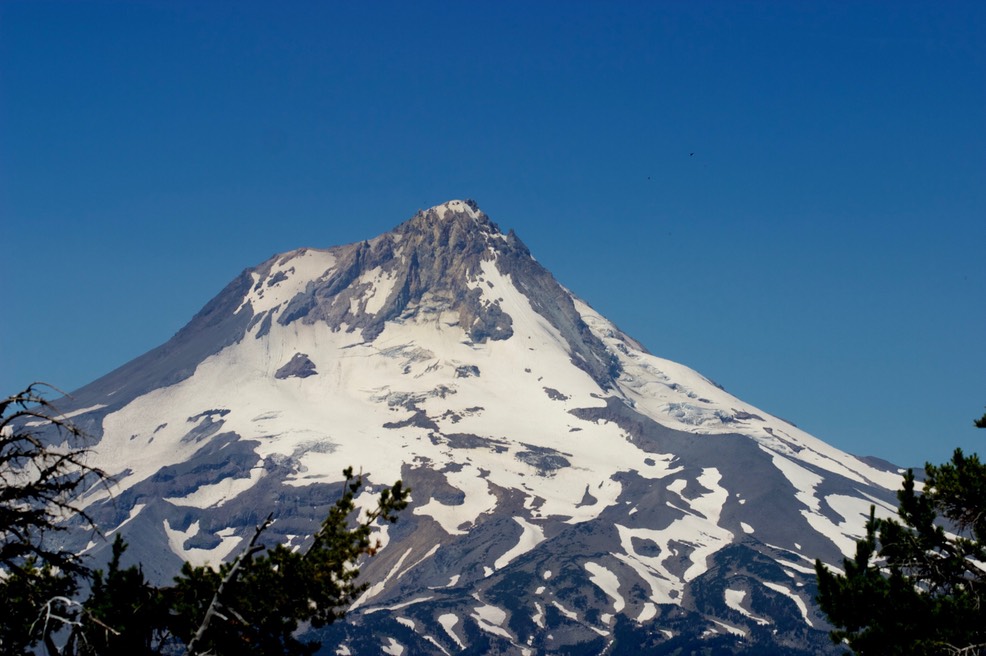
South Side of Mt. Adams
Above Timberline,
Washington, USA
We finally reached a large glacial moraine and made our way to the ridge top, then dropped down to cross a large snow field, eventually reaching the unnamed lake pictured above at about 7,650 feet. We had lunch, headed up the scree slope to bypass the snow field (which had proven to be very compacted and quite treacherous without crampons), trading sliding rock for sliding bodies on snow.
A great day of hiking with about 2,000 feet in elevation gain and elapsed time of eight hours. August in Washington, like summer everywhere, involves a bit of Merlot, smoked salmon, mangos, and fresh bread by a glacial lake.
COLUMBIA GORGE
The Columbia River is 1,243 miles long, its drainage (258,000 square miles) is about the size of France, and has the greatest flow of water of any North American River which enters the Pacific. As it approaches the Pacific it cuts through the Cascade Mountain Range creating the Columbia Gorge, or simply “The Gorge”. The Gorge forms the boundary between the states of Oregon and Washington. The following posts are about the north side of the river, The Columbia Gorge of Washington.
Grassy Knoll
On September 2, 2006, Rebecca and I hiked up Grassy Knoll to see what it looked like at that time of year. The trail is moderate, rising only 800 feet to an elevation of 3,649 feet (4.4 miles roundtrip). Typically we visit during the spring and early summer when this wonderful area is full of flowers.
The wind was blowing strongly all day so I limped home with 6 crummy photos of flower berries and red leaves and no photos of birds. I was wondering how I could tie this walk in with birding and birding trips and failed miserably, we saw only one (very large) Hairy Woodpecker and a number of Crows.
What it did remind me of was previous trips and the wonderful juxtaposition of memories. We saw Bead Lily in berry (that is where the plant gets its name), for instance, and memories of the plant in flower (below) and the plant in berry merged in a wonderful sense of cycle.
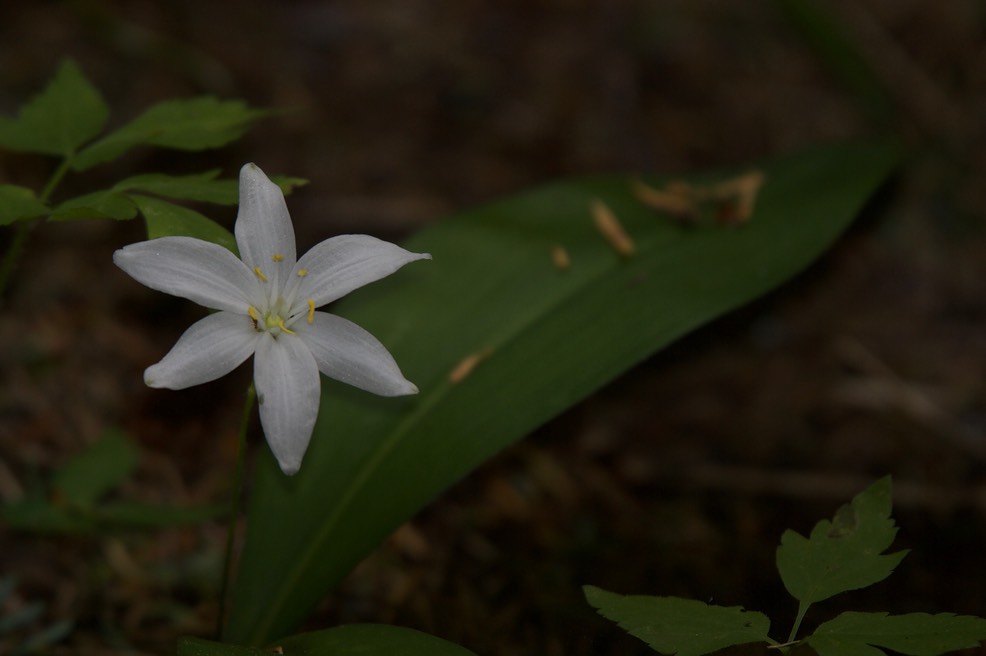
Clintonia uniflora, Bead Lily
Grassy Knoll, Columbia Gorge, Washington
The view from the top, which is often spectacular, was obscured by smoke from the forest fires. We have a number this year, luckily the Australians and New Zealanders have sent fire fighting crews to help (our National Guard which often does that sort of stuff is deployed to fight our glorious leader’s holy war.)
It turned out to be a perfect day -- and the Tennessee Volunteers beat the California Golden Bears in their first football game of the season!
Catherine Creek
On April 12, 2008 I noted that "Yesterday the sun was shining and we knew it -- it always shines but in Portland its presence is generally obscured in the fall, winter, and spring. Rebecca and I headed up the Columbia Gorge to Catherine Creek for some walking up hill. Grass Widow flowers were at their peak, the sun was bright, the trees were coming into bud -- a perfect day in the Northwest."
American Dipper
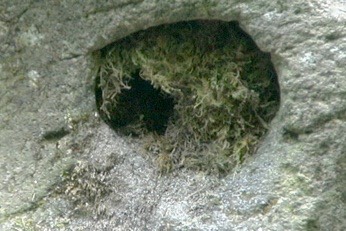
In 2005 I was clambering over rock in a stream in the Columbia Gorge, on the Washington side of the river, hoping to improve my tape of American Dipper. On that particular quest I failed the main mission - but - I did find an American Dipper nest - the bird was just too fast in its comings and goings.
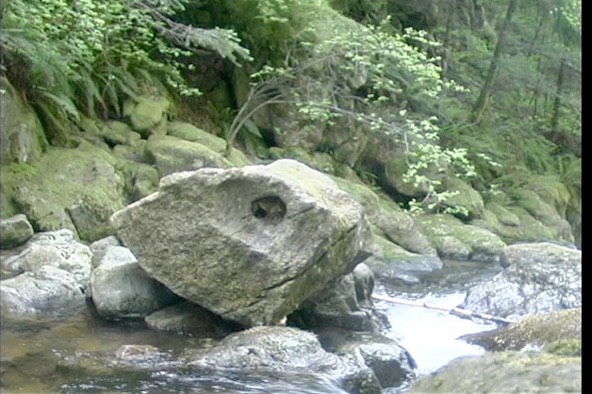
The nest of the American Dipper is interesting, soft moss lining a hole in the rock less than three feet above the stream. I did not pay to much attention to the nest itself - bringing me to this topic. There are many aspects of the lives of birds which don’t particularly interest me. Nests being a prime example, I love to get tape of a bird on the nest, or feeding fledglings, but the nest itself is generally of little interest to me. Even when it is as exotic as the one to the right. I think of birding as being significantly less holistic than ornithology. This distinction between the generalist (perhaps with extensive knowledge in a number of specialties) and a specialist (a counter of bird species) is found throughout life. But is confused by the argument that a generalist must know little about the individual component parts - to achieve a significant level of understanding about any particular component you must be a specialist -- bunk, a generalist who understands much about much is called competent. A specialist who knows little about the relationships of his/her speciality to the broader topic is called limited. I suppose that means that I should take an interest in nests at some point in my life.
But, I know so little that it may not matter.
West Coast Lady
I remember vividly standing amongst the pine trees in the Klickitat River Drainage of Washington state watching as hundreds of Vanessa annabella, the West Coast Lady, flew by - migrating south. I had no idea of what they were in store for…
MT. ST. HELENS
In the 1980’s before the mountain blew its top we were near Mt. St. Helens, I had not been birding that long. The trip was for warblers but “the bird” turned out to be a Hooded Merganser. The sighting was unexpected and the flood of excitement that I felt has not been matched on many occasions since. I had scoped the species out in the field guide and it looked very exotic and it certainly was not a backyard bird. And now, there it was.... I want to always be able to recall that moment...
RIDGEFIELD NATIONAL WILDLIFE REFUGE
Ridgefield National Wildlife Refuge is just north of Vancouver, Washington. When I lived in the Pacific Northwest, Ridgefield was a favorite birding and hiking location for me. Many fond memories from Ridgefield: walking with grandkids; riding about with Rebecca’s Mom, Jean (Jane) Hallgarth; video recording with the moon roof of the Honda Element off as Rebecca drove me around “the loop”, my own personal safari; lots of time with Jon and Bethanne; lots of time alone as I spent time mellowing out after work by photographing, videoing, and watching.
I was often able to get fairly close to my photo subjects at Ridgefield. Others too, a friend told me of an experience she had in 2006 at the Refuge. She and her husband were riding their bicycles near the Columbia River. At that time of year there is a lot of activity at Ridgefield including Swans, Bald Eagles, Sandhill Cranes, and the always present Great Blue Heron. They had seen all of those species earlier in the morning but things had become quiet as they returned. As they rode along they were startled when an adult Great Blue Heron flushed from the ditch by the track a few feet away and glided squawking to a nearby field. (The bird below is a Cocoi Heron from the Pantanal of Brazil.)
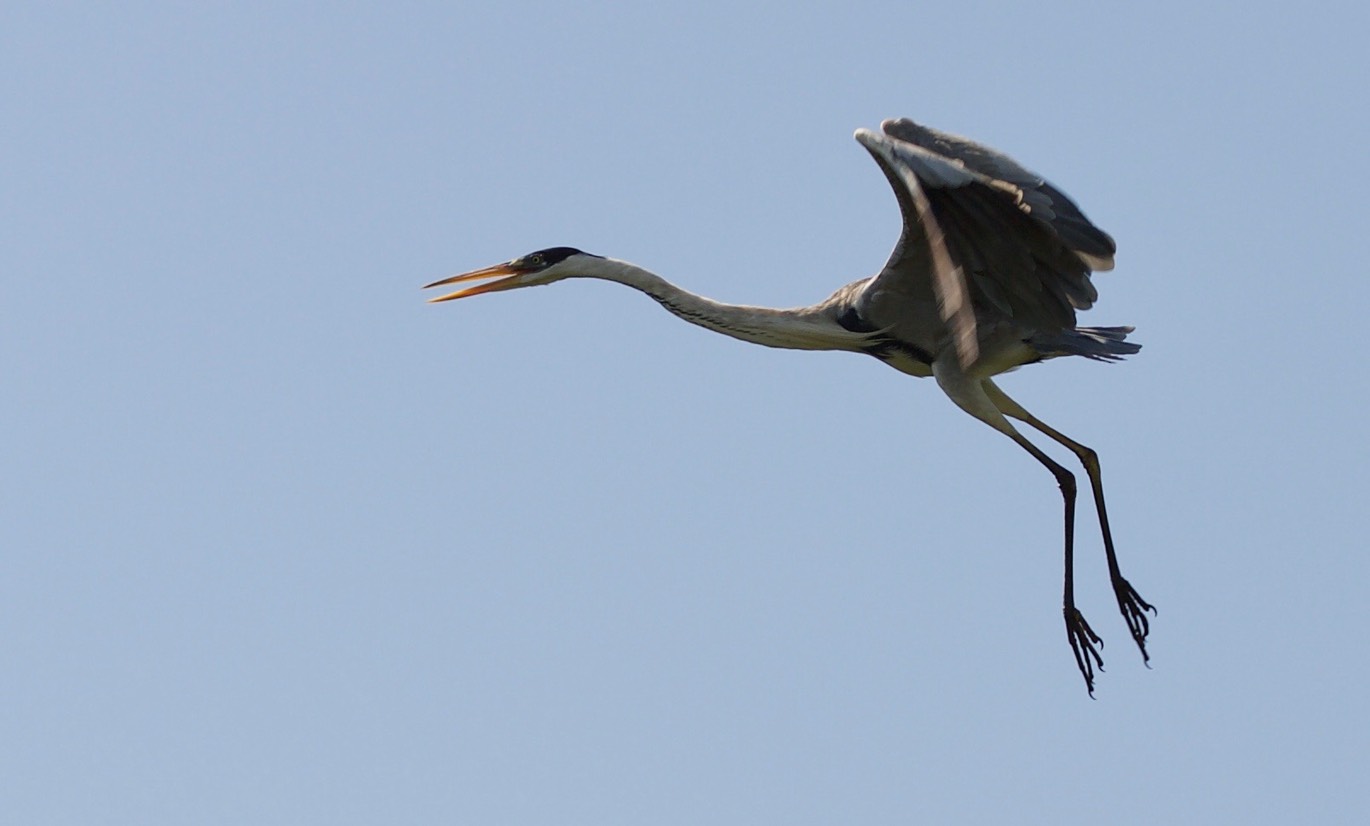
This reminded me of three events with cranes, herons, and such which I have had. Near Juneau, Alaska, USA I had a Great Blue Heron flush from beside the road and fly just above the hood of the car as I drove along. In Costa Rica I had a Jabiru flush and fly off just above me and in Brazil I had the same experience with a Cocoi Heron. And it was a flock of Sandhill Cranes gliding through the air only a few feet above a pasture which started my birding adventure many years ago.
As she told me of her experience, with arms waving and eyes enlarged, I remember the similar reactions I have had many times before - and enjoyed.
From a post entitled: Ridgefield NWR, Washington, USA (original post on September 22, 2007)
One of the birding locations which I will miss significantly is Ridgefield National Wildlife Refuge located in the southern part of Washington (USA), along the I-5 corridor.
My favorite time of year at Ridgefield is the winter when all of the duck and raptor species are there. At that time of year it is likely that you will see Red-tailed and Rough-legged Hawks and lots of Bald Eagles. At times Red-shouldered Hawks have been reported and Great Horned Owls and their fledglings are fairly easy to find. A Vermillion Flycatcher was seen there one winter, with Tundra Swans by the scores in the background.
There are two units at the Refuge, one to the north has nice trails and the one to the south has a driving loop and short trails. Rebecca sometimes drives me around the loop - I am in the back of my Honda Element with the moon roof popped out and my tripod set up. There I stand, video taping as the mood arises, giving the top of the vehicle a tap when I am ready to move on -- safari in southern Washington.
THE OLYMPIC PENINSULA
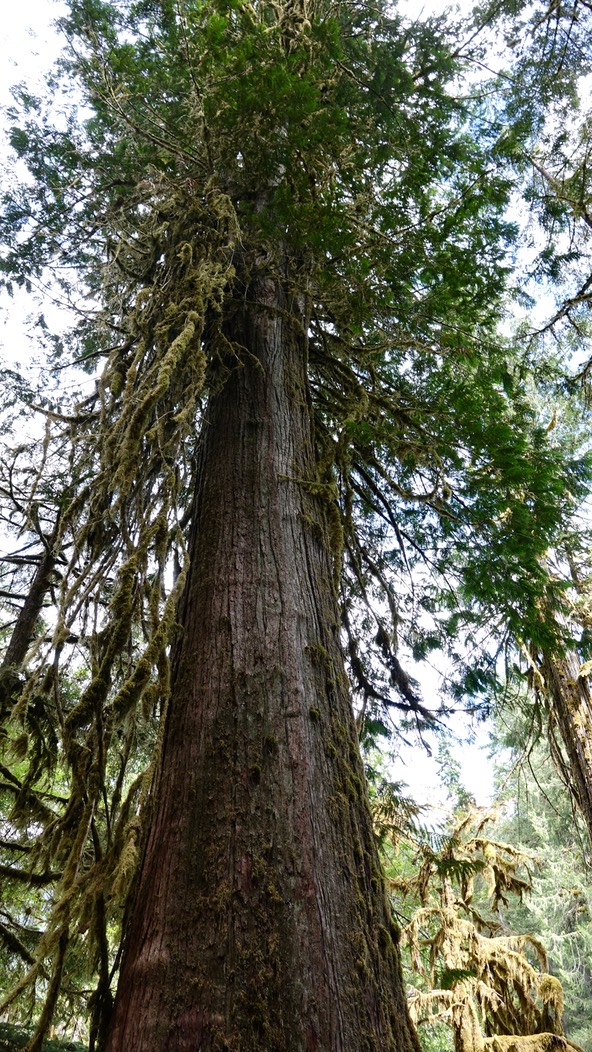
The Olympic Peninsula takes up a good deal of the northwest corner of the state of Washington. It is dominated by Olympic National Park which takes up most of the Peninsula’s interior. Along the western edges of the Peninsula the Pacific Ocean crashes. Along the northern edge the Strait of Juan de Fuca separates Washington from Vancouver Island in British Columbia. The Eastern Edge is bordered by Puget Sound, many islands, inlets, and mud flats. The following posts are about my experiences on the Peninsula.
August 17, 2017
Today, Bethanne showed Rebecca and I one of her favorite hiking spots, the area northeast of Lake Cushman, the trails along Staircase Rapids and the Skokomish River. I had never been in this particular area before and it was a wonderful “home-coming” after hiking the dry washes near Hillsboro in New Mexico.
As we walked along I was reminded that a Western Red Cedar tree (photo right) is a bit taller than a Mesquite.
The trail in this area wanders along the slope above the river. There were many small rapids and lots of exposed boulders and rock - a lot of water comes through this area at times, but not today.
We ate Salmonberry, Rubus spectabilis, as we walked along. In one area we came across mosses which were an aquamarine color. Turns out copper had been mined in the area and these plants were growing on some of the tailings from those mines, apparently ingesting the copper and taking on the hue of malachite (see photo below).
Photographs from this outing have been added to the Washington Photo Gallery on this site.
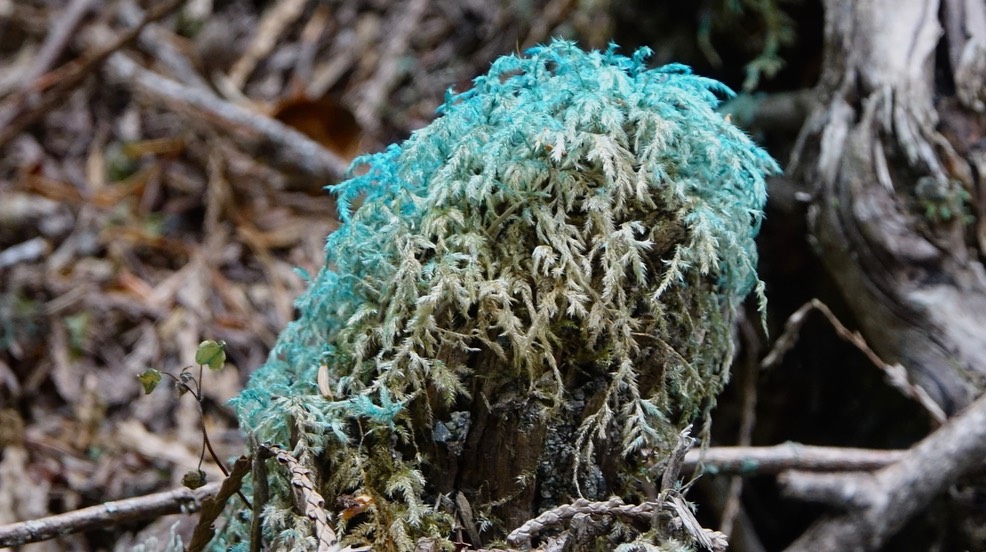
A short video of some of the sights along this walk is found below.
August 23, 2017 - Olympic National Park - Beach 2 & Hoh Rainforest
We could not spend any time in the Pacific Northwest without a visit to the beach. For that venture, we decided to spend some time at one of the beach units of the Olympic National Park. As we got closer to the Pacific Ocean we settled on the romantically named “Beach 2”. A short walk through the costal forest brought us to a lovely sand beach smothered in heavy fog. We spent a few hours at mid-day strolling through the fog, wading in the waves…the usual beach stuff. There were Western Sandpipers, Semipalmated Plovers, and various gulls (California, Herring, Glaucous-winged) about. During the time we spent on the beach we encountered five people (four at the very end of our stay as we headed back up the trail to the car). The photographs below, and many others, have been added to the Washington Photos gallery.
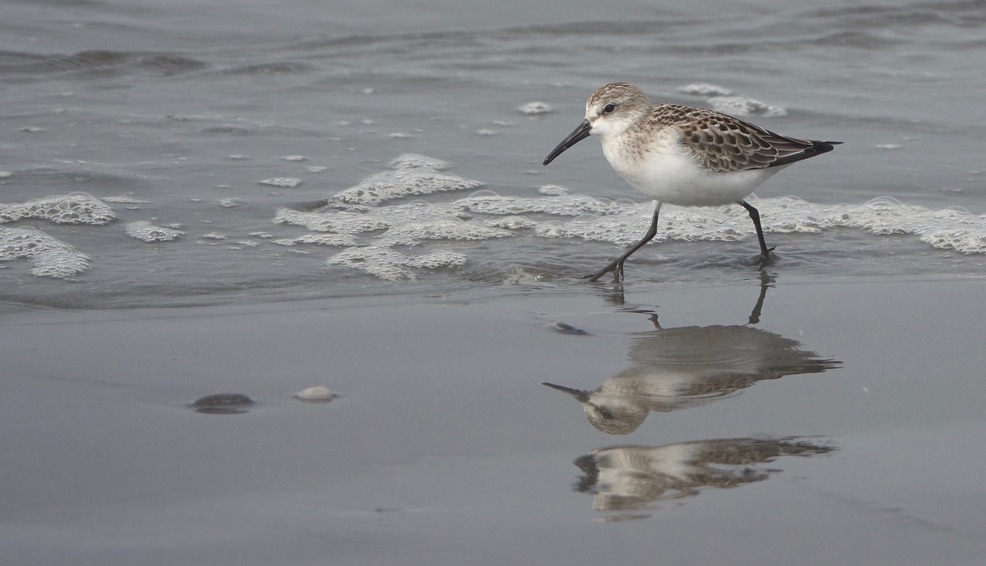
Western Sandpiper (above) Semipalmated Plover (below)
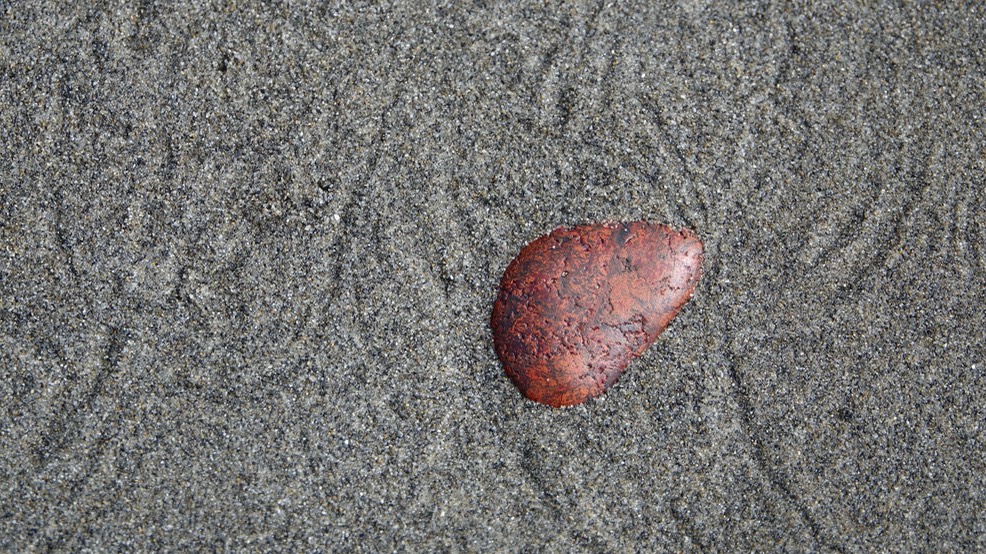
Rebecca had not been to the Hoh Rainforest so we drove up the road a way so that I could show her a great example of a temperate rainforest. Our time was limited there, the Hoh went on the list for some future trip. It had been fairly dry so the moss was not as dramatic as it is at times. The photo below, of water plants in a stream, and others have been added to the Washington Photos gallery.
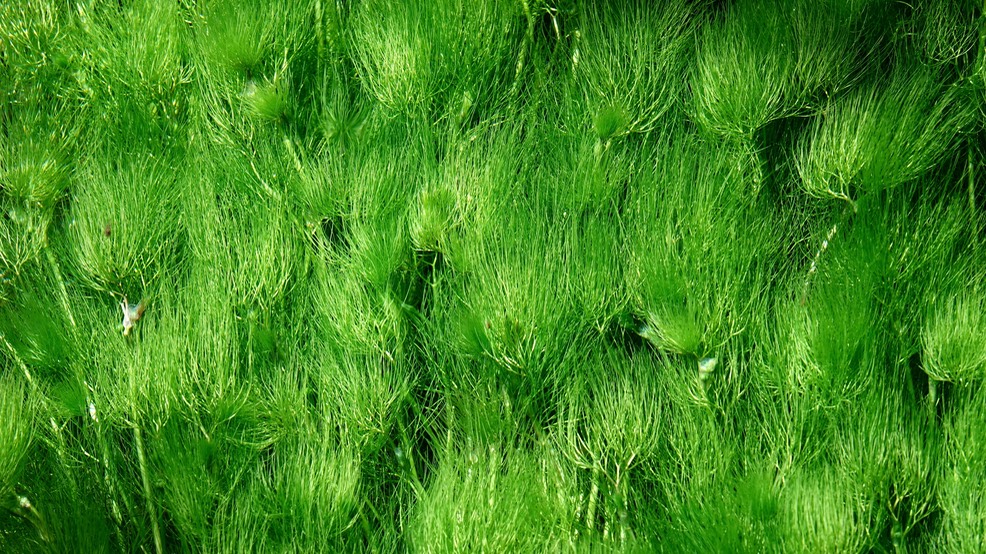
Nisqually National Wildlife Refuge
August 18, 2017 - Nisqually National Wildlife Refuge
The Nisqually National Wildlife Refuge (or more legally, the Billy Frank Jr. Nisqually National Wildlife Refuge) is located only a few miles north of Olympia where we were staying on this trip to the Northwest. I have known it as Nisqually for most of my birding life so that is what I will stick with, disregarding the 2015 name change. Having known it, and having spent a large amount of time there are two different things. I have been to the Refuge less than a score of times, but each time I have ferreted out something new and interesting.
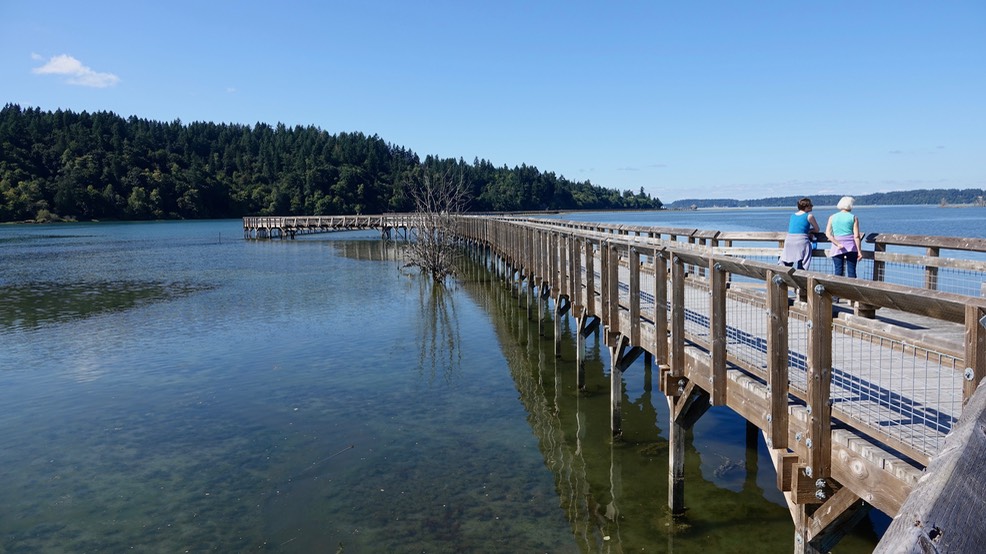
It has been a long time since I have been to the refuge and a long boardwalk has been added since I was last there. It extends out over the mudflats and offers many different experiences, depending on the level of the water. It provides the opportunity to see Least Sandpiper on the way out and Harbor Seal on the way in (photos below) - if you take your time.

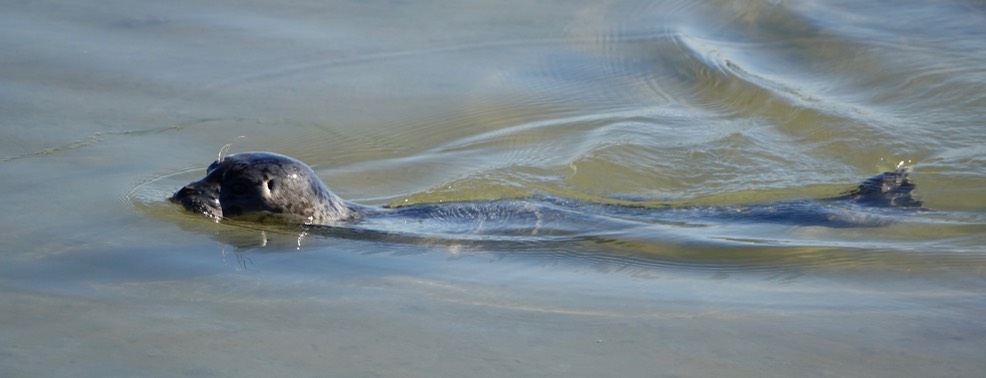
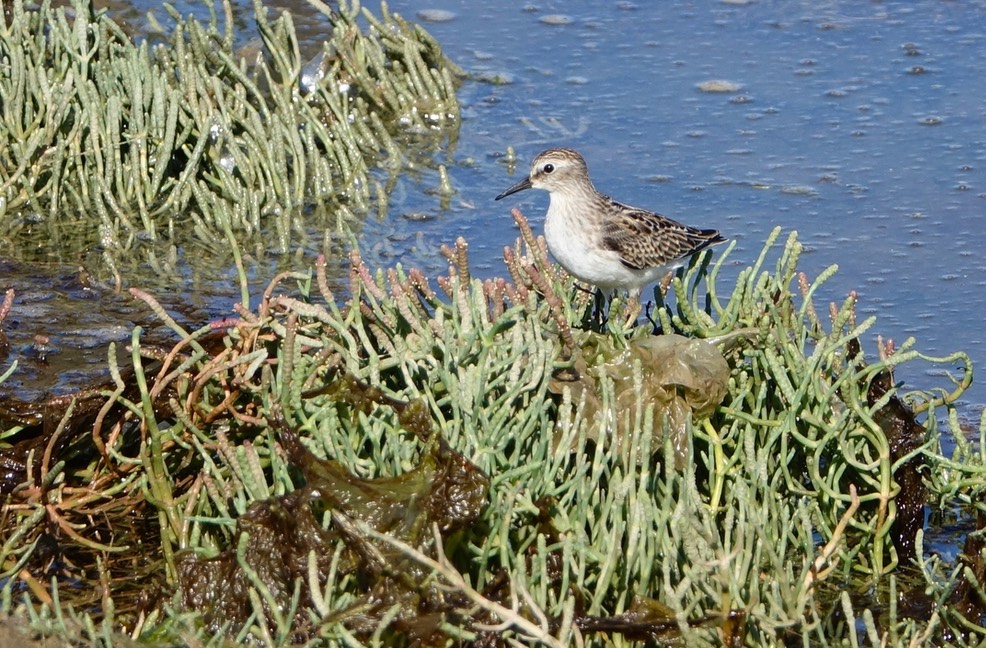
Photos from this outing have been added to the Washington Photos gallery. Videos of Ring-billed Gull and Great Blue Heron recorded on this outing has been added to the Birds of the United States and Canada video portfolio. Video of the Harbor Seal has been added to the Mammals video portfolio.